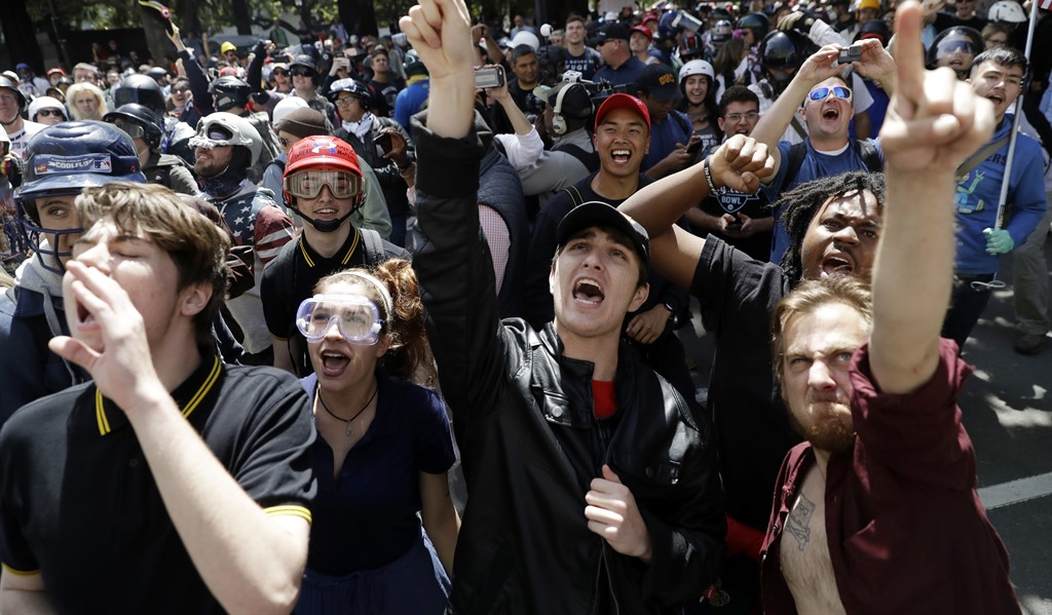This country is more polarized today than it has been at any time in the last half century. That’s the conclusion of pundits on the right and the left.
Bill Maher writes, “Would anyone ride the New York City subway wearing a MAGA hat, or go to a NASCAR race in a Biden T-shirt? That’s where we are now: Other parts of the country are seen as no-go zones.” Peggy Noonan writes that we not only hate each other, we are “enjoying hating each other.” You even hear people raising the possibility of civil war.
We’ve been seriously polarized before. Disagreement over the Vietnam war is one example. In the late 1960s, mass demonstrations and clashes with the police became increasingly common. Extreme violence over the issue marred the Democratic National Convention in Chicago in 1968 and very probably caused Hubert Humphrey to lose the presidential election to Richard Nixon. Clashes over the repeal of Jim Crow laws, school desegregation and school busing are other instances where people often took to the streets and tempers led to violence of one sort or another.
In each of these cases, there were arguments and (sometimes not so civil) debates over a major public policy issue. What are the major public policy issues that are dividing us today?
I suggest that there aren’t any. What is driving a wedge between us today is tribalism – not government policy.
When it comes to public policy, people today are more tolerant and accepting of views that are not their own than they ever have been. And this is especially true on issues involving race and sex. People can argue and disagree over a good many public policies. But these days, such disagreements don’t typically lead to fist fights.
Think of attitudes people have about a policy issue depicted in the shape of a bell curve. Out on the very right and left tails of the distribution there are people who care about the issue passionately and they viscerally disagree with each other. Abortion and climate change are two examples. But that doesn’t create a polarized society.
Recommended
Polarization occurs when people in the middle of the bell curve distribution passionately disagree with each other. That’s not true of abortion. Ever since the Roe v. Wade decision, the bulk of public opinion has been in the middle, and consistently so. People might disagree over whether abortion should be allowed up to three or four or five months. But those are differences of degree, and they don’t lead to shouting matches.
The same is true of climate change. At the extremes, you find people who passionately disagree with each other. But in the middle of the public opinion distribution, differences about the importance of climate change are no more significant than differences that lead to betting on a football game. In fact, climate change barely registers as an issue of concern to most voters.
So, how does tribalism explain our polarization?
According to the Pew Research Center, more than half of Joe Biden supporters are motivated not by a desire to elect Biden but out of a desire to defeat Donald Trump. Is that because they don’t like Trump’s tax cuts or his policy toward Ukraine? That’s doubtful. It’s hard to avoid the conclusion that the coming election is not about issues at all.
Biden voters and Trump voters appear to have very different world views. According to a Pew Research poll, only 19 percent of Biden voters believe society is better off if people prioritize marriage and children, compared to 56 percent of Trump supporters.
Arnold Kling notes that 50 years ago we all went to the same movies, watched the same TV shows and listened to the same music. Today, technology is creating splinter groups. We can completely immerse ourselves in a culture that is different from the culture others experience. Combine that with the emergence of identity politics and you have a recipe for a complete fracturing.
Biden voters who are primarily motivated by the desire to defeat Trump don’t just hate Trump. Very likely, they hate Trump voters as well.
Many years ago, I saw foreign affairs columnist Robin Wright taking questions from callers on C-Span. One caller politely asked if he should refer to her as “Miss or Mrs.” As contemptuously and as condescendingly as possible, she answered “It’s Ms.”
I didn’t realize then that I was observing a cultural divide that would grow in intensity through time. Today we live in cultures that are worlds apart, and the residents of those worlds don’t like each other.























Join the conversation as a VIP Member